The current state of the air defense of the countries of the former Soviet Union republics. Part 5
Azerbaijan
Until 1980, the sky over Azerbaijan, Armenia, Georgia, the Stavropol Territory and the Astrakhan Region was defended by parts of the Baku Air Defense District. This operational connection of the air defense forces of the USSR, performing the tasks of air defense of the North Caucasus and Transcaucasia, was formed in 1942 in order to protect the strategic oil fields, industrial centers and transport hubs. In 1980, as part of the reform of the USSR Air Defense Forces, the Baku Air Defense District was transformed into the air defense of the Transcaucasian Military District. At the same time, units and subunits of the Air Defense Forces of the country were reassigned to the command of the Transcaucasian Military District and the 34-th Air Army (34-I BA). Subsequently, this decision was recognized as erroneous, since the control of air defense throughout the country was largely decentralized and the air defense forces became overly dependent on the command of the Air Force. To remedy this situation, in 1986, the 19-I separate Red Banner Air Defense Army (19-I OKA Air Defense) with headquarters in Tbilisi was created.
The 19-th OKA air defense was in the area of responsibility: the Stavropol Territory, Astrakhan, Volgograd and Rostov Regions, Georgia, Azerbaijan and part of Turkmenistan. The army consisted of three corps (12, 14, and 15) and two air defense divisions. In connection with the collapse of the USSR, the 19-I separate air defense army in October 1992 was disbanded, part of the weapons that were not exported to Russia, and the infrastructure was transferred to the Armed Forces of the Transcaucasian republics.
Up to 1988, the 15 Corps of the Air Defense Forces was located on the territory of Azerbaijan; in 1990, it was transformed into the 97 Division of the Air Defense. The division consisted of: 82 th iap at the Pumping airfield on MiG-25PDS, 128 zrbr - headquarters in Zira, 129 zrbr - headquarters in Sangachaly, 190 zrp - headquarters in Mingechaur and two radio engineering brigades, in manpower, in armor The anti-aircraft missile forces were armed with medium-range air defense systems of the C-75М2 / М3 modifications, low-altitude С-125М / М1, long-range С-200ВМ. The control of the air situation, the issuance of target designation of the air defense missile system and the targeting of the air defense interceptors were carried out on the basis of information received from the radar: П-12, П-14, П-15, П-18, П-19, П-35, П-37, П- 80, 22Ж6 and radio altimeters: PRV-9, PRV-11, PRV-13, PRV-16. As can be seen from the list of equipment and weapons available in Azerbaijan, the most modern anti-aircraft systems and radars were not sent here. Most of this technology was produced in the middle of the 60's early 80's.
As a result of the division of property of the Soviet Army, Azerbaijan inherited the bulk of the equipment and weapons of the 97 Air Defense Division, including more than 30 interceptors MiG-25PD / PDS and 5 light fighters MiG-21 from the 34-VA. This many times exceeded the amount of air defense weapons that Georgia received. In addition, the Krug-M4, Strela-1, Osa-AK / AKM, Strela-10М, Strela-2, “ Needle-3 ”and“ Needle ”, ZSU ZSU-1-23“ Shilka ”, 4-mm anti-aircraft guns С-57 and 60-mm ЗУ-23.
The radar of the missile attack warning system (SPAR) of the Daryal type remained on the territory of Azerbaijan after it gained independence. Azerbaijan, whose property was this station, was not needed, but the Daryal radar station was vital for Russia, in the EWS of which, after the collapse of the Soviet Union, gaps were formed. After the conclusion of an intergovernmental agreement, Russia continued its use under lease terms. The Gabala radar station had the status of an information and analytical center, whose activities could not be directed (directly or indirectly) against the sovereignty and security interests of Azerbaijan. The air defense defense radar of the early warning missile system was provided by the air defense forces of Azerbaijan, which the Russian side pledged to assist in modernization. Russia annually paid $ 7 million to the station for rent. Under the terms of the contract, the number of Russian specialists at the station could not exceed 1500 people. In addition to the Russian staff, citizens of Azerbaijan worked at the facility. In 2012, the lease term expired, and, in view of the fact that the parties did not agree on the cost of rent (Baku demanded to increase it to $ 300 million per year), Russia stopped operating the radar, by which time to replace the station Daryal in Gabala the territory of the Russian Federation was built modern radar "Voronezh". In 2013, the equipment was partially dismantled and taken to Russia, the Russian military left the garrison, and the object was transferred to Azerbaijan.
Even before the official independence of Azerbaijan and Armenia, an ethnic conflict broke out between these republics. Later, during the war in Nagorno-Karabakh, the parties actively used Aviation and air defense systems. However, despite Azerbaijan’s superiority in armaments, Armenia managed to defend the independence of Nagorno-Karabakh, and this smoldering, periodically escalating armed conflict is still a sore point in relations between the two Transcaucasian republics. In this regard, Azerbaijan and Armenia spend considerable funds on improving their own Air Force and Air Defense.
Layout of positions of the air defense system and radar in Azerbaijan as of 2011 year.
In Azerbaijan, air defense troops are organizationally part of the Air Force. The anti-aircraft missile forces of Azerbaijan are the most numerous and well-equipped among the Transcaucasian and Central Asian republics of the former USSR. In the 21 century, the leadership of Azerbaijan allocated very serious money by the standards of the republic for the improvement of air defense and air force.
In 1998, eight identical interceptors were acquired in Kazakhstan in order to replace the outgoing MiG-25 in Kazakhstan. Currently available in Azerbaijan 10 MiG-25PDS and 6 MiG-25PD are not in flight condition. According to information available in the media, the repair and modernization of these aircraft with the help of Ukrainian specialists was planned for 2014 year. However, it is not known whether these plans are implemented.
Since the MiG-25 interceptors didn’t meet modern requirements in many ways and were too expensive to operate, 2006 MiG-2007 and 12 MiG-29UB were bought in the 2-29 years in Ukraine. In the 2009-2011 years, Ukraine additionally supplied the 2 combat training MiG-29UB. Before that, the aircraft underwent a refurbishment and a “small modernization”, which was reduced to the installation of modern communications and navigation equipment. The planned modernization of the airborne radar with an increase of approximately 20% detection range did not take place. Create your own radar for the fighter in Ukraine could not. It must be said that this contract gave Ukrainian aircraft repair enterprises the opportunity to try out "in practice" theoretical developments under the "small modernization" program of MiGs, which later came in handy during repairs and modernization of their own fighters.
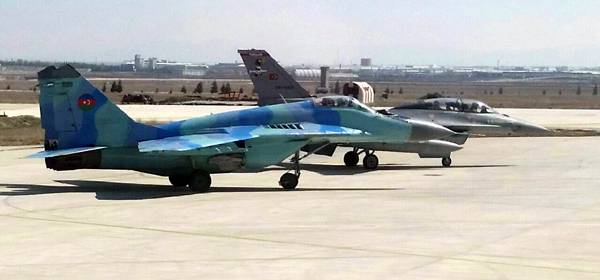
Azerbaijani MiG-29 and Turkish F-16 during the Azerbaijani-Turkish exercises Turaz ahini 2016.
However, due to the fact that the former Ukrainian MiG-29 fighters were built in the USSR and their life cycle is close to completion, Azerbaijan is actively looking for a replacement for them. The Pakistani-Chinese lightweight fighter JF-17 Thunder has repeatedly predicted this role. This aircraft was offered at the end of 2007, when Pakistan only adopted it. Since then, the parties have repeatedly discussed the issue of delivery, but have not come to concrete results. The advantages of the JF-17 are the low cost and the possibility of using aviation munitions of Soviet and Russian production, which are accumulated in Azerbaijan. But, according to a number of leading aviation specialists, this fighter does not fully meet modern requirements and is still "raw." In addition to light JF-17, Azerbaijan actively probed the ground regarding the acquisition of light Swedish fighters Saab JAS 39 Gripen and multi-functional heavy Su-30MK. The possible deliveries of Gripenov are hampered by an unresolved territorial dispute with Armenia, used on the Swedish fighter engine, avionics and American-made armament. Russian fighters have much greater capabilities than JF-17 and Saab JAS 39, but selling them will give Azerbaijan a significant advantage over Armenia, which is a strategic ally of Russia, and may in the long run exacerbate the situation in the region.
The zone of destruction of the air defense missile system as of 2011 year, where dark red is C-75, turquoise is C-125, dull green is “Circle”, purple is C-200.
The layout of the air defense system shows that the main part of the air defense system and radar are located in the central part of Azerbaijan and around Baku. In Azerbaijan, air defense systems built in the USSR are still in operation, some of which were modernized to extend the resource and increase combat performance. First of all, it concerns the low-altitude C-125М / М1, upgraded by the Belarusian NGO Tetrahedron to the level of C-125-TM Pechora-2Т in 2009-2014. At the same time, in addition to extending the service life of the complex, its noise immunity and the ability to combat targets barely visible in the radar range was increased. On positions in Azerbaijan, combat duty is carried by 9 srdn C-125.
In the majority of reference materials relating to the air defense system of Azerbaijan, it is indicated that the S-75 air defense system was removed from service. Before 2012, positions in this country were at least four C-75М3, mainly in the Yevlakh region, around the city of Mingechaur. However, in satellite images dated the first half of 2016 of the year, it is clear that one C-75 with missiles on launchers is still deployed in the vicinity of Baku.
Another anti-aircraft complex, preserved in the Transcaucasian republic from Soviet times, is the long-range air defense system С-200ВМ. After the division of the property of the 97 Division of the Air Defense Forces, Azerbaijan received four C-200ВМ divisions. Two C-200BM positions with B-880 (5B28) missiles (HNUMXBXNUMX) are still deployed east of Baku, one kilometer from the coast of the Caspian Sea.
In the picture you can see that the missiles are located only on 4 from 12 available "guns". Most likely, this is due to the development of the resource of rockets and the lack of reserves of standard fuel and oxidizer. However, the rockets of the Azerbaijani air defense system S-200BM traditionally play an important ceremonial role, they look very impressive at military parades. But lately in this they have been pressed by towed launchers of the C-300PMU2 Favorit anti-aircraft missile system. They were first shown to the public 26 on June 2011 of the year at the parade in Baku. It is worth recalling that the C-300PMU2 “Favorite” is an export modification of the Russian PZR C-300PM2. It uses a towed launcher with four transport and launch containers (TPK).
These missiles were originally intended for Iran, but in connection with the decree of Russian President Dmitry Medvedev, who succumbed to pressure from the West and Israel, the contract with Iran was canceled. However, in order not to let down the manufacturer of the C-300P systems - the Almaz-Antey Air Defense Concern, it was decided to sell the already built air defense systems to Azerbaijan. Deliveries of the first C-300PMU2 elements began in July of the 2010 year and ended in the 2012 year. In total, the Azerbaijani Air Defense Forces received three C-300PMU-2 battalions, 8 launchers in each division, as well as 200 anti-aircraft 48H6EXNNXX missiles. Prior to the completion of the supplies, the Azerbaijani calculations received theoretical and practical training at the Russian air defense training centers.
Another anti-aircraft complex, recently demonstrated at military parades, was the Krug, a medium-range mobile air defense system. Azerbaijan under the division of the Soviet inheritance received the latest upgraded version of the 2K11М1 "Circle-M1", adopted in 1974 year. In 2012, in the Agjabedi region of Azerbaijan, there were three anti-aircraft batteries in positions: P-40 air target detection radar, 1C32 missile guidance station and three 2П24 SPU. In addition to the combat duty and participation in parades, the Azerbaijani "Circles" regularly conducted practical shooting.
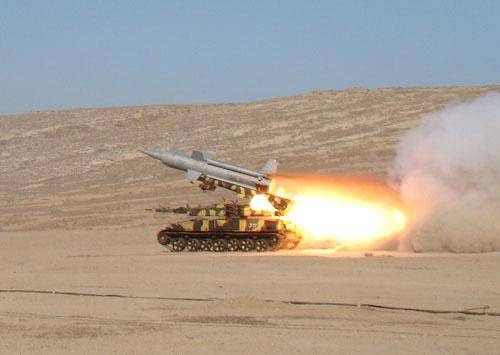
However, in later satellite images, it can be seen that the ZRK positions are currently empty, and the equipment and the Zur on transport-charging machines (TZM) are moved to the storage bases. Based on the operating experience of the Krug air defense system in the Russian armed forces, it can be assumed that the hardware resource of the Azerbaijani complexes is fully developed, and due to the cracking of the rubber tanks, numerous kerosene leaks were observed on the anti-aircraft missiles, making fire fighting extremely dangerous.
At the beginning of December 2014, X-NUMX military vehicles Tor-M76E and other auxiliary equipment were delivered by military transport Il-8 to Azerbaijan. The air defense systems of the Tor family are intended to cover important administrative, economic and military facilities, the first echelons of land units from the most modern means of air attack. This air defense system is capable of operating both manually, with the participation of operators, and fully automatic mode. At the same time, the “Thor” system itself controls the airspace in a given area and independently knocks down all air targets unidentified by the system of state recognition.
Shortly before the delivery of the Thors, the Buk-М9-317 division of the 1K2 air defense system went to Azerbaijan. In addition to Russia, anti-aircraft complexes are being procured in other countries. So, in 2012, Azerbaijan received one division “Buk-MB” from the structure of the armed forces of Belarus. Before the start of deliveries to Azerbaijan, the Belarusian “Buki” were modernized and refined to apply the new 9М317 missiles. The standard radar of the Buk-М1 9С18М1 radar was replaced with a mobile three-dimensional 80-6М circular radar on a wheeled chassis. According to the leading engineer of the Belarusian JSC “AGAT management system” Andrey Permyakov, the modernization of the Buk-MB air defense system has improved the performance of the complex, operational and ergonomic characteristics, increased reliability, noise immunity and survivability, as well as ensured a high level of combat training. In addition, after the overhaul of the air defense missile system, its service life is extended by 15 years.
Recently it became known about the supply to Azerbaijan of two batteries of mobile air defense systems of the near-field Т38 Stilet. The short-range T38 “Stilet” air defense system was created at the Belarusian enterprise “Tetrahedr” on the basis of the “Osa” air defense system. The T382 missiles were developed for it in the Luch Kiev design bureau. The control systems of the complex are made on the new element base, the combat vehicle in addition to the radar is equipped with an electron-optical detection system. Compared to the OSA-AKM air defense system, the range of aerial targets is doubled and is 20 km. ZRK T38 "Stilet" is located on the wheeled chassis of the MZKT-69222T. Apparently, the Stirlet T38 air defense system made a favorable impression on the Azerbaijani military. As Igor Novik, head of the Tetrahedr company, said in an interview with journalists, “a larger order is being carried out now.” The Azerbaijani military are betting on modern means of fighting aviation, but at the same time, the Soviet-made mobile units Osa-AKM and Strela-10 are armed with the air defense units of the Ground Forces. A part of Osa-AKM complexes was upgraded in Belarus to the level Osa-9T 33К1-1Т. In order to update outdated and exhausted storage of MANPADS in Russia, 300 Igla-S MANPADS with 1500 missile ammunition were purchased.
In the 2011 year, almost simultaneously with the Russian C-300PMU2 air defense systems, one Israeli-made Barak-8 medium-range air defense system was delivered to Azerbaijan. Initially, this complex was created in 1987 year to protect ships from aviation and anti-ship missiles, later developed the land version.
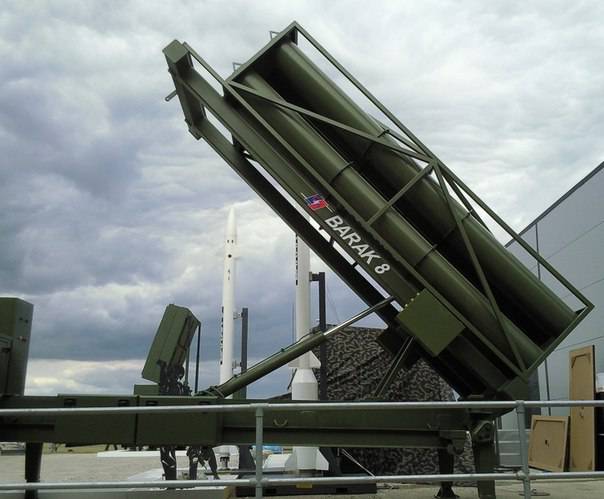
It is quite expensive weapon, the cost of one battery of the “Barak-8” air defense missile system exceeds 20 million dollars, the missile defense system has a cost of about $ 1,6 million per unit. The complex is capable of fighting both aerodynamic and ballistic targets at a distance of 70-80 km. Two-stage solid propellant missiles for the complex "Barak-8" with a length of 4,5 m equipped with an active radar seeker. The rocket is launched using a vertical launcher and is capable of intercepting a target in difficult weather conditions at any time of the day. After launch, the rocket receives target designation from the radar guidance. On approaching the target, Zur launches the second engine and activates the radar seeker. LAW "Barak-8" provides the transfer of information on the rocket in flight, and can retarget it to another target, which increases the flexibility of application and reduces the use of missiles. The ELM-2248 multi-purpose radar for detecting, tracking and guiding is also capable, in addition to controlling the Barak-8 air defense missile system, to coordinate the actions of other air defense units.
In 2012, Azerbaijan purchased weapons in the amount of $ 1,6 billion in Israel. In addition to small arms, armored vehicles, artillery, RPGs, ATGM and UAVs, the SPYDER SR short-range air defense system was acquired. The complex includes: point of intelligence and control (PRU), SPU with four TPK and TZM. Elements of the air defense missile system are mounted on a three-axle all-wheel drive cargo chassis. The composition of the anti-aircraft battery can include up to six SPU. Target indication over the radio channel is carried out by the three-coordinate pulse-Doppler radar of the ELM 2106NG. As part of the complex used missiles with TGS Python 5, which was originally developed as a melee air combat missile. In addition to the Python 5 SAM, Derby SAMs with active radar seeker can be used. The range of destruction of air targets is 15-20 km.
In 2013, a contract was signed between Azerbaijan and Israel for the supply of the Iron Dome anti-missile system (“Iron dome”). According to the information of the company Rafael on the beginning of October 2016, the missile defense system was ready for delivery to Azerbaijan. The tactical missile defense system "Iron Dome" is designed to protect against unguided missiles with a range of flight from 4 to 70 kilometers. One battery can protect an area of 150 square kilometers.
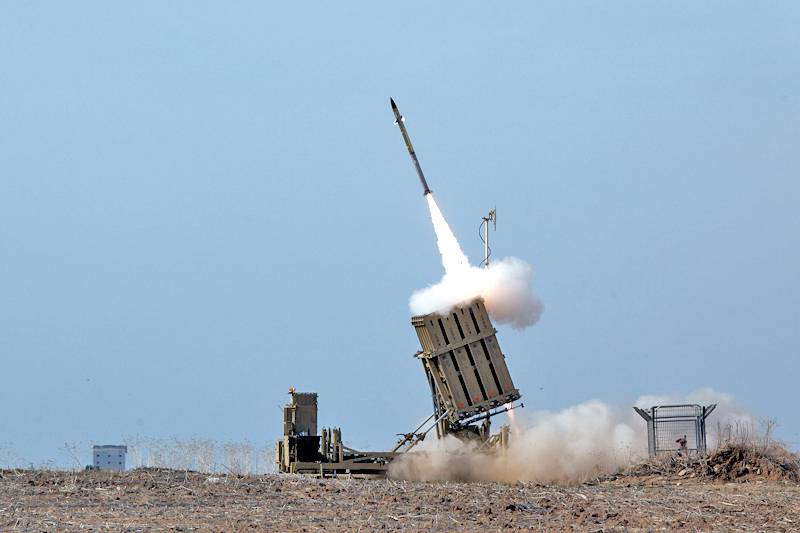
The battery consists of: a multi-purpose radar ELM-2084, designed to accurately identify the target and determine the trajectory of its flight, a fire control center, three launchers with 20 th Tamir interceptor missiles. The cost of one battery exceeds $ 50 million, the cost of starting one anti-rocket in 2012 was $ 20 thousand.
Until now, Soviet-made radar stations are used in Azerbaijan: П-14, П-18, П-19, П-37, 22ЖXNNXX. For the replacement of radars produced in 6-60-e, at the beginning of 70-x were delivered three-dimensional radars of the review of airspace 2000-36-M. The detection range of 6D36-M is up to 6 km. For radar transportation, KrAZ-360 or KrAZ-6322 tractors are used, the station can be deployed or collapsed within half an hour. The construction of a radar of this type was carried out in Ukraine at the State Enterprise "Scientific and Production Complex" Iskra "in Zaporozhye. As of the beginning of the 6446, the 2000Д36-M station was one of the best in its class by the criterion of “cost-effectiveness”. It can be used in modern automated air defense systems for detecting low-flying air targets, covered by active and passive interference, for air traffic control of military and civil aviation. If necessary, the 6D36-M operates as a stand-alone control point. Currently, there are three 6D36-M radars in Azerbaijan.
In 2007, the construction of the new Iskar Research and Production Complex began the construction of a new three-dimensional mobile three-dimensional radar with a phased array 80K6. Azerbaijan in the 2012 year at the same time with the purchase of the modernized Buk-MB air defense system in Belarus acquired in Ukraine several modernized radar 80K6M.
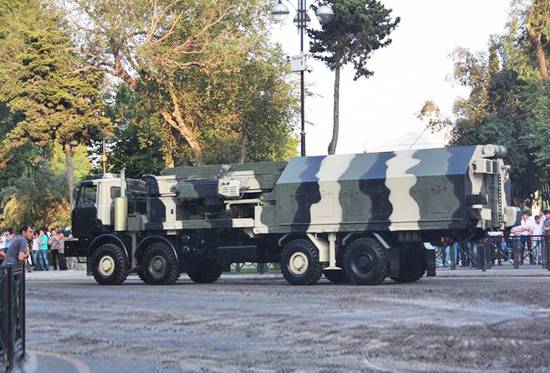
The mobile three-coordinate radar station of the circular review of the 80K6M radar was demonstrated on June 12 on the military parade in Baku. Deployment-coagulation radar 26K2013M compared to the base model is reduced in 80 times and is - 6 minutes. 5K6M radar has a wider field of view - up to 80 degrees, which allows detecting ballistic targets. Antenna post, hardware and calculation are placed on the same transport unit, made on the Volat MZKT off-road chassis. According to Iskra, representatives of the main tactical and technical capabilities of the 6K55M radar can compete with the US AN / TPS 80 station and the GM6 Thales Raytheon Systems station of France. However, in the context of the decline of industrial production in Ukraine and the breakdown of industrial and economic ties with Russian affiliated companies, doubts arise about the possibility of mass production of such complex products.
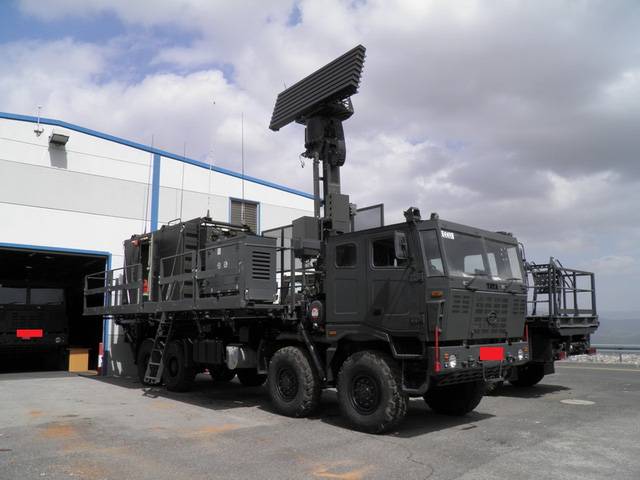
In addition to the Ukrainian 36D6-M and 80K6M radars, Azerbaijan has two modern Israeli three-coordinate stations ELM-2288 AD-STAR and ELM-2106NG. According to Israeli data, radars have a dual purpose, in addition to controlling the air defense system and fighter jets, they can be used to control air traffic. The ELM-2288 AD-STAR radar is capable of controlling airspace at a distance of up to 480 km, the ELM-2106NG station is designed to detect low-flying aircraft, helicopters and UAVs at a distance of up to 90 km, the number of simultaneously accompanied targets is 60.
Azerbaijan conducts active military cooperation with the United States in gathering intelligence information in Iran and Russia. In the 2008 year, in the 1 km from the Iranian border, two stationary radar stations modernized with the help of the USA began to function in the Lerik region of Azerbaijan. Russian means of radio intelligence regularly record the work of powerful fixed radars on the Russian-Azerbaijani border and in the Caspian Sea. The operation of these stations is carried out jointly, in the interests of Azerbaijan and the United States.
The weak side of the Azerbaijani Air Force is the relative small size of the fighter fleet and the small residual MiG-29 resource. The need to preserve fighters as part of the air defense forces is due to their versatility and the ability to produce a visual identification of air targets in the event of an unintentional violation of borders. This allows you to prevent unwanted incidents associated with the unintentional defeat of civil aircraft and all sorts of accidents. Whereas long-range air defense systems do not possess this capability. In the next few years, in order to preserve the aviation component of the air defense forces, the purchase of modern fighters 10-12 is necessary. But as a whole, the air defense system of Azerbaijan fully complies with modern requirements and, with proper use, is quite able to cover its troops, important administrative and industrial facilities, inflict unacceptable losses on combat aircraft of Armenia, Georgia or Iran. In the event of a hypothetical conflict, the Azerbaijani air defense will not be able to restrain Russian military aviation for a long time, but much depends on the quality of the planning of the air operation, on how widely modern EW facilities and high-precision aircraft are used to combat radar and air defense systems. It is worth remembering that the much weaker Georgian air defense system in 2008 managed to present a number of unpleasant surprises to our military pilots.
Based on:
https://lenta.ru/articles/2016/04/04/wartime/
http://www.russianarms.ru/forum/index.php?topic=6094.0
https://istiglal.com/tag/ввс-азербайджана/
http://forum.vardanank.org/lofiversion/index.php/t242631.html
http://www.iai.co.il/2013/22031-en/homepage.aspx
- Linnik Sergey
- The current state of the air defense of the countries of the former Soviet Union republics. Part 1
The current state of the air defense of the countries of the former Soviet Union republics. Part 2
The current state of the air defense of the countries of the former Soviet Union republics. Part 3
The current state of the air defense of the countries of the former Soviet Union republics. Part 4
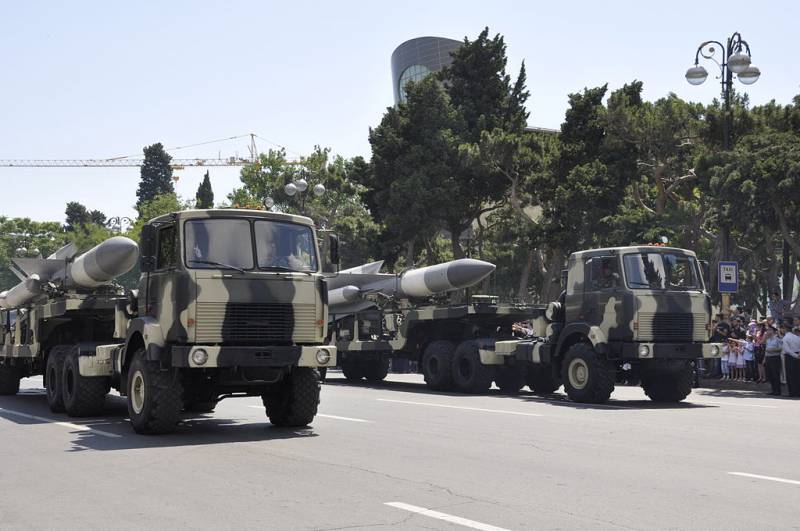
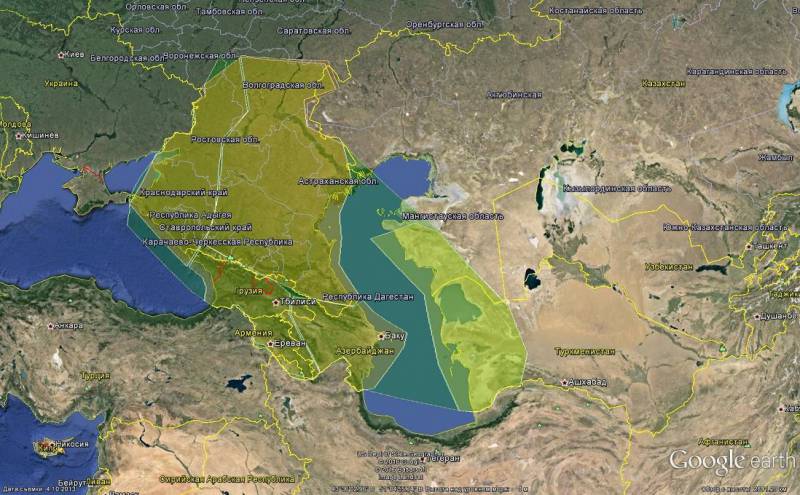
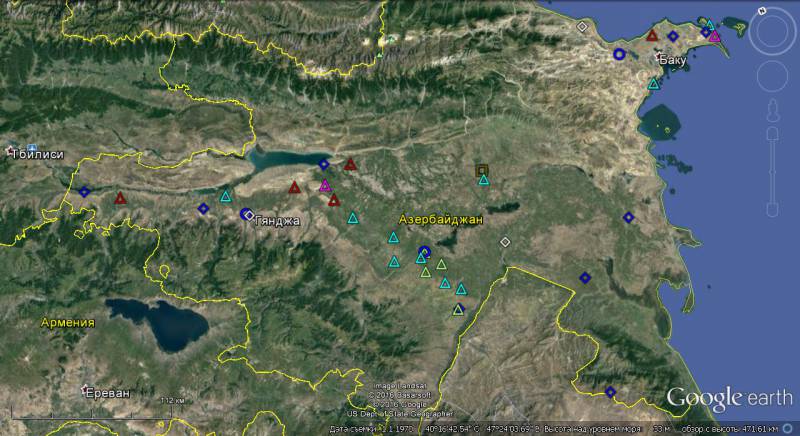
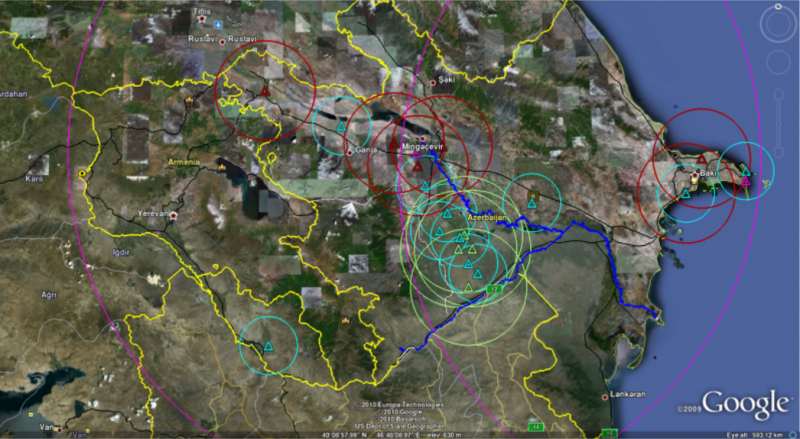
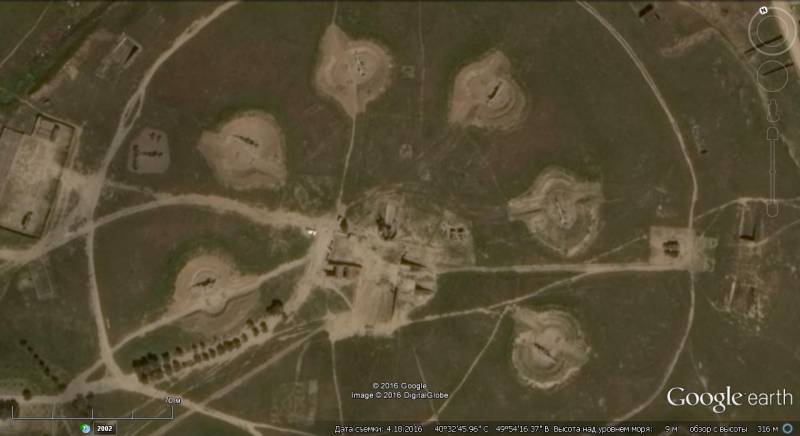
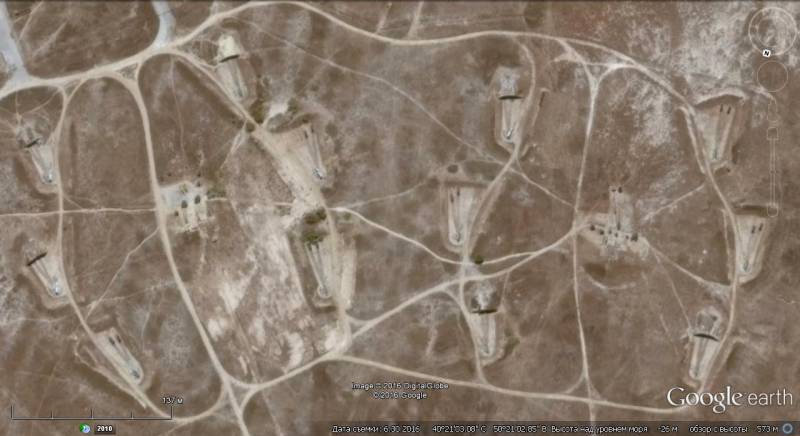
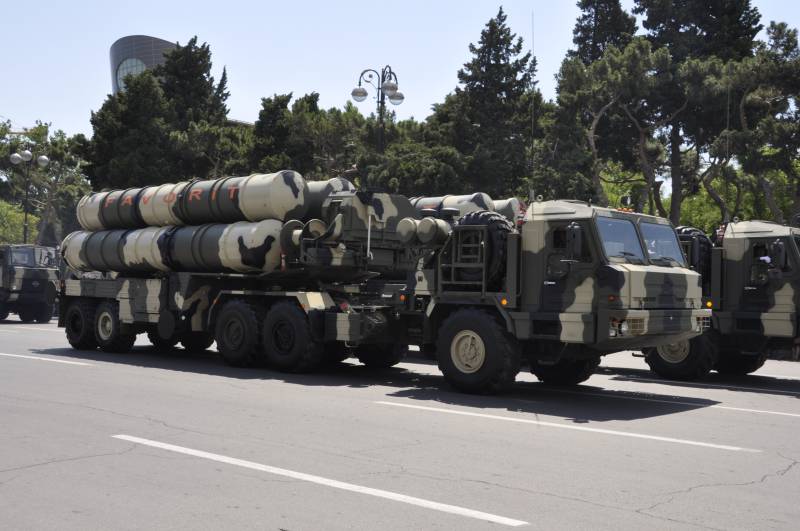
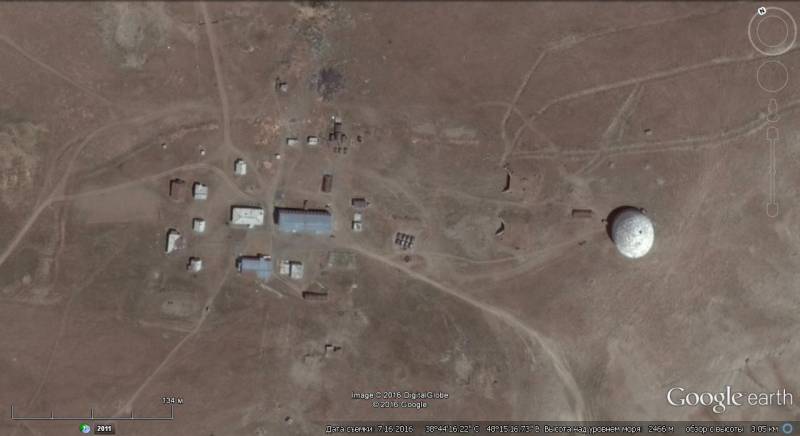
Information